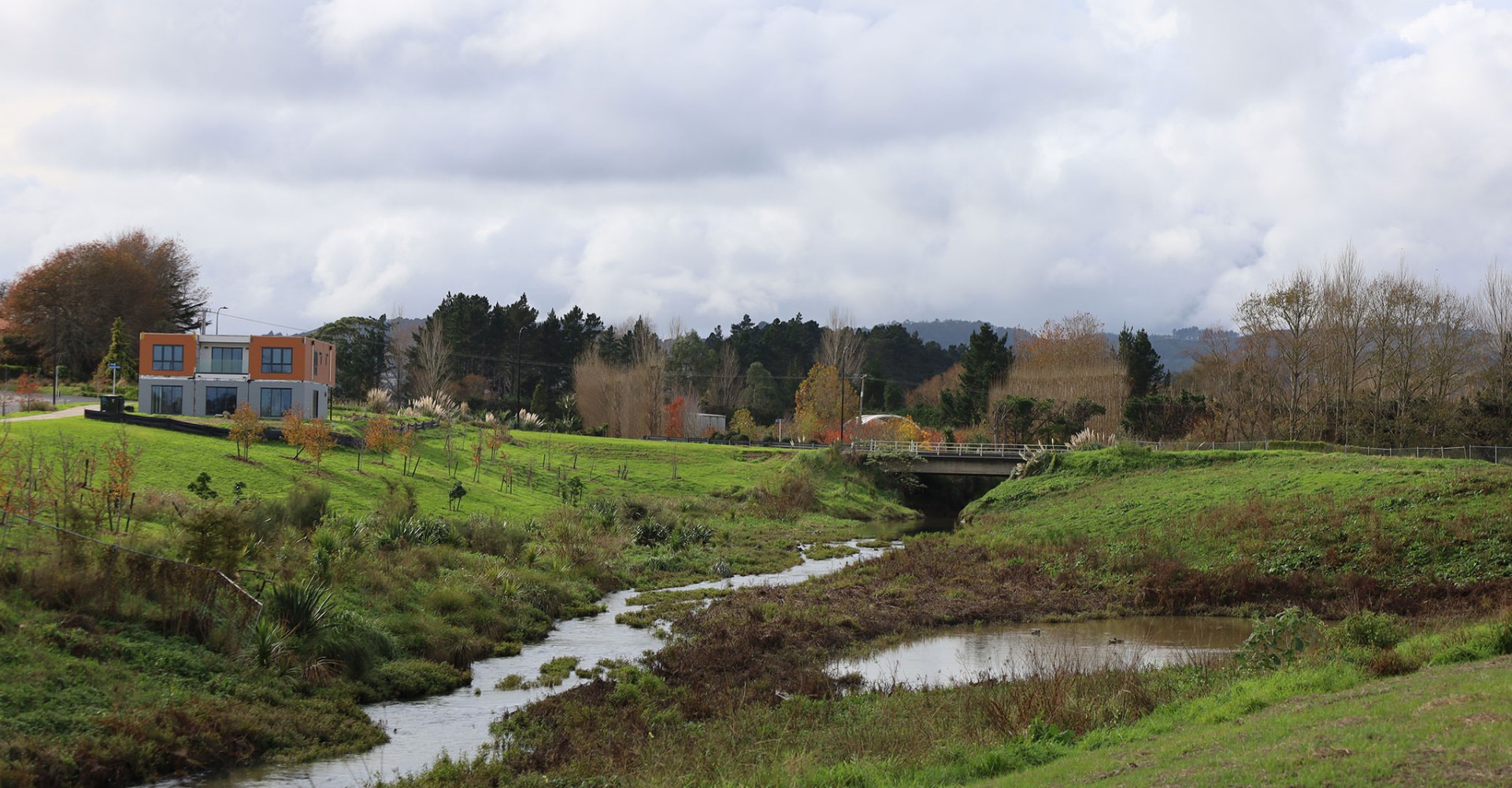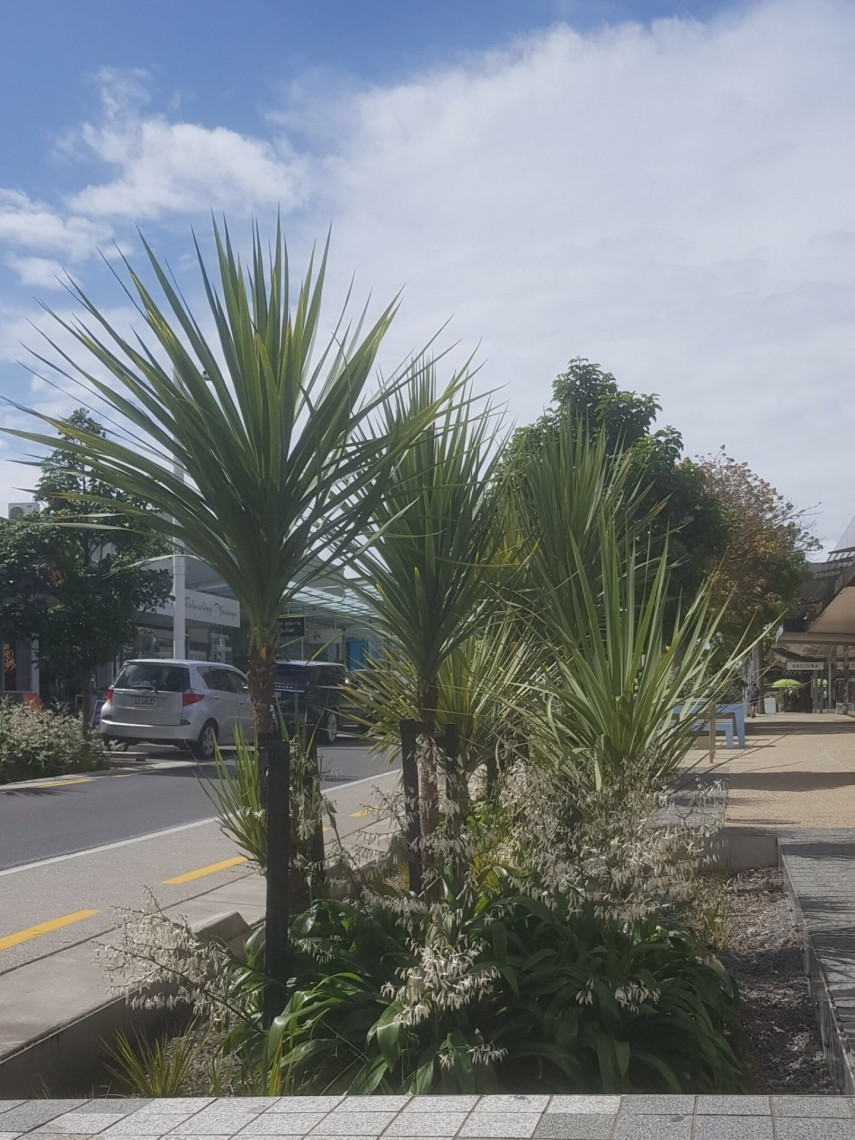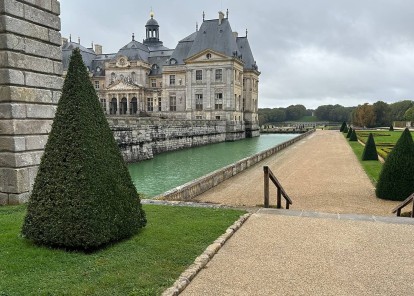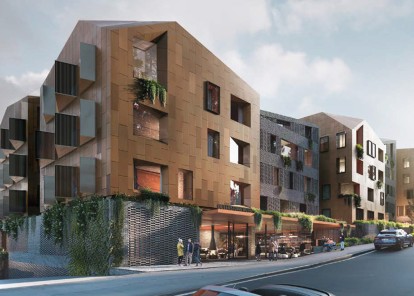Understanding Waterway Design – Swales, Raingardens and Wetlands

Waterway design and management is increasingly becoming a key part of Reset Urban Design’s scope of work. This area is interesting as it sees a crossover of the specialist skills of civil engineering, ecology, hydrology and landscape architecture. Recent projects such as Hurstmere Road saw the introduction of rainwater gardens into the streetscape, while in Bellfield Estate and Opaheke Park we have established wetlands as part of the water management strategy.
Waterway design and management typically has key objectives:
- Improvement of water quality – though natural or engineered filtration, or a combination of both.
- Retention – management of the water though infiltration on site.
- Flood management – typically though detention or holding the water on site within wetlands or ponds.
- Ecological restoration – creation and improvement of habitats for plants and animals.
- Development of facilities – recreation, education and cultural appreciation.
There are a number of approaches to water design that are used frequently, but may be misunderstood, or have different meanings in in different regions. Examples of these include swales, raingardens and wetlands. The following is a basic summary of each to help with general understanding.
Swale
A swale is the least engineered solution to water management. Essentially it is a depression or channel designed to divert or hold water on a site. Depending on the project and soil type there may be a level of engineering involved, like a gravel pit at the base to assist in soaking, but they can easily be a grass or planted verge at a low point in the property to direct or manage a period of high rainfall.
Raingardens
Raingardens are a more engineered approach than a swale, and often seen in more urban environments. Typically they are an engineered concrete box, set underground, and linked into local stormwater network. The concrete box is filled with gravel, soil and often shrubs and trees, giving the impression of a planter box in the street.
Raingardens typically have two objectives, cleaning water of pollutants and holding water for a period to manage runoff and flooding. They are often seen adjacent to roads or paved areas to capture the water from the hard surfaces. Raingardens are planted, so offer some aesthetic value in terms of structural planting and can provide shade and cooling to and urban environment.
Wetlands
Wetlands can be either natural or manmade. For natural, think of low areas with almost constant water like marshland and mangroves. They serve as valuable ecosystems for fauna and flora, and offer flood protection to lowland areas. Manmade wetlands typically try to replicate the natural system, usually in areas that are degraded or in development areas where natural water management is being used.
Wetlands can vary a lot depending on the nature of the site and project objectives but the key attributes will likely be water holding and cleansing, restoring or establishing various ecologies, and depending on the scale potential some human experiences at the edges like boardwalks, cycleways or cultural elements.
If you have any questions about Waterway Design, get in touch.
References:
Water Sensitive Urban Design, Wellington City Council.
Stormwater Management Devices, Auckland City Council.
On-Site Stormwater Management Guideline, New Zealand Water Environment Research Foundation.

Published
8 October, 2022
Author
Linda Joll
More articles Pitopito kōrero
Practice Tikanga
At Reset Urban Design, we offer a broad scope of services within the specialist areas of Urban Design and Landscape Architecture. We also actively engage in research and have contributed two published books on the history of design in New Zealand.


